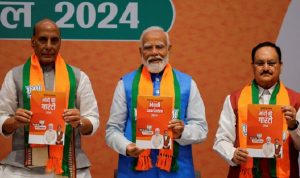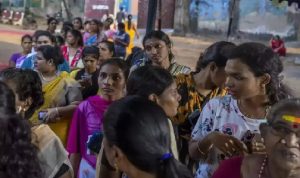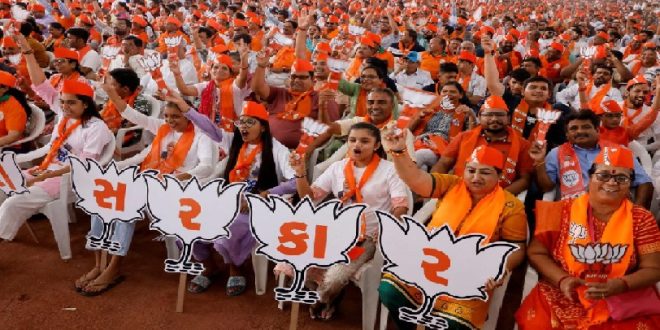03-05-2024
Bureau Report + Agencies
NEW DELHI: A lower turnout so far in India’s long general election has rattled Prime Minister Narendra Modi’s campaign managers, raising into question whether his Bharatiya Janata Party (BJP) and its allies can achieve the landslide victory predicted by opinion polls just one month ago.
 The lack of momentum has been partly blamed on apathy among party workers believing victory is assured and seems to have prompted Modi to change tack in his campaign speeches to try to fire up the Hindu majority, the party’s support base, and get them out to voting stations, political analysts said.
The lack of momentum has been partly blamed on apathy among party workers believing victory is assured and seems to have prompted Modi to change tack in his campaign speeches to try to fire up the Hindu majority, the party’s support base, and get them out to voting stations, political analysts said.
The last major opinion poll had predicted that the BJP and its allies could win three-fourths of parliament’s 543 seats at stake on the back of Modi’s popularity, strong economic growth, handouts and the inauguration of a Hindu temple on a contested site in the Hindu majority country.
At the last election in 2019, the BJP won 303 seats and its allies won around 50 seats. Its slogan before this year’s election began was “Ab ki baar, 400 paar” or “This time, above 400”.
More than half a dozen BJP leaders and political analysts that Reuters spoke to said a lack of momentum in the two initial phases of the seven-phase election have dampened hopes of a huge majority for the party, although they said it was still likely to retain power in the world’s most populous nation.
What could be affected is the BJP’s aim to get a two-thirds majority in the chamber, or 362 seats, which would let the party usher in far-reaching constitutional changes.
“The fall in polling turnout is mainly due to apathy among party workers and voters,” said Sanjay Sharma, one of the members of the BJP’s campaign committee in the northern state of Haryana.
Some candidates were being affected by an anti-incumbency wave, he said, adding the party was facing a “tough fight” in the state where it won all ten parliamentary seats in 2019.
 Modi himself has shifted in his campaign speeches from a focus on the administration’s successes in his 10-year tenure to targeting minority Muslims and the opposition Congress party.
Modi himself has shifted in his campaign speeches from a focus on the administration’s successes in his 10-year tenure to targeting minority Muslims and the opposition Congress party.
“After the first phase, we saw a definite change of strategy by the PM…delivering Islamophobic kind of speeches,” said Arati Jerath, a Delhi-based political commentator. “Obviously, he has now decided to polarize the campaign.”
A total of 190 seats went to the polls on April 19 and 27 with approximate voter turnout at about 66%, the Election Commission has said. The number was only slightly lower than the last election in 2019, although there was a drop of 5-8 percentage points in voting in the BJP and allied-ruled states Uttar Pradesh, Bihar and Rajasthan.
The BJP had been hoping for a high turnout, believing that would signal that its supporters had voted in force.
Polling ends on June 1 and votes will be counted on June 4. The government bans
Gopal Krishna Agarwal, BJP’s national spokesman, said the voting numbers were “below expectations” but would not have much impact on the final results.
“Many voters have become lethargic as they are convinced about the victory of the party,” he said. The BJP’s shift in tack may have backfired with some voters.
“We have lost interest because the BJP is seeking votes by communalizing the campaign, and not on its performance,” said Vikash Kumar, a voter in Rajnandgaon in the state of Chhattisgarh.
 Pressmediaofindia
Pressmediaofindia




